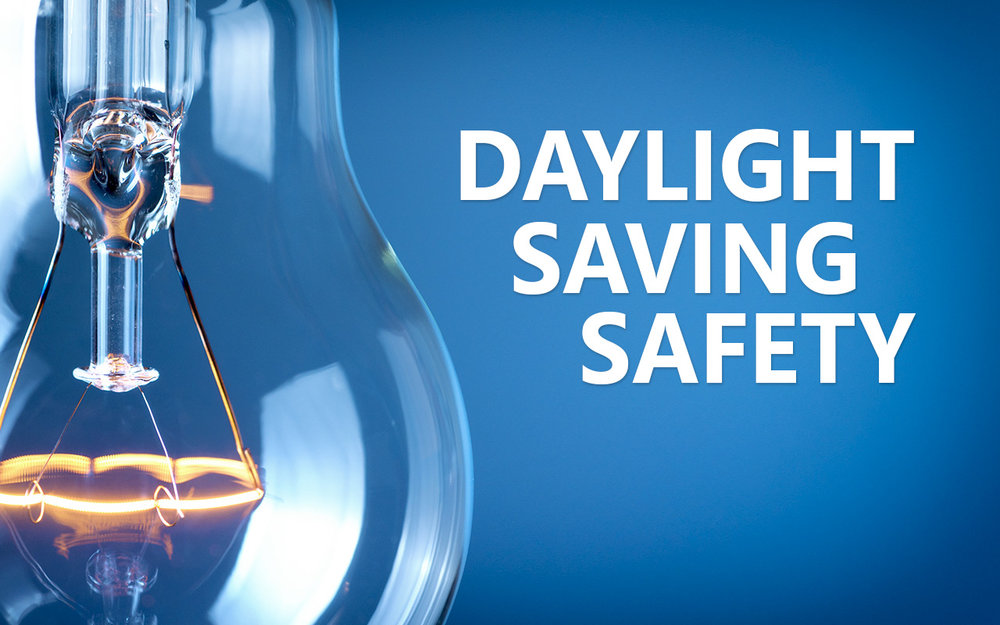
Daylight Saving Time Ends Sunday, November 5th at 2:00 am
(Remember to set your clock back an hour. Or, just let your phone do it for you.)
The days before and after daylight saving time can often see an increase in accidents at home and on the road. Here are a few tips for staying safe during this time:
HOME: Check and replace the batteries in your smoke and carbon monoxide (CO) detectors. The Consumer Product Safety Commission also recommends that you check the age of your detectors and that you replace smoke detectors older than 10 years and CO detectors older than five years. Check the small gauge on all fire extinguishers to ensure the needle is still in the green. Inclement weather can lead to power outages and, in some areas, flooding. Prepare a safety kit for your home that includes water, food, flashlights, batteries, blankets and first aid supplies.
PERSONAL: There are reports every year of an increase in car and home accidents around the daylight-saving time clock changes (in both fall and spring). Leading up to turning the clocks back, gradually adjust your sleep schedule to the new time. Try to avoid building up a sleep deficit before the time change. Just being aware that you need to be more alert when the clocks change appears to increase your safety.
CAR: Even if you have a roadside assistance contract, you should still prepare a safety kit for your car. This kit can include a first aid kit, water, nonperishable snacks, a warm blanket, a fire extinguisher, reflective triangle hazard signs, jumper cables and the ever-handy duct tape. Be sure your cell phone is fully charged before you get into the car and that you have an adequate amount of gas in your car in case you find yourself stuck in traffic. Find additional items to include by searching for “car safety kit” online.
Additional safety and preparedness tips can be found at Redcross.org and emd.wa.gov.
+ show Comments
- Hide Comments
add a comment